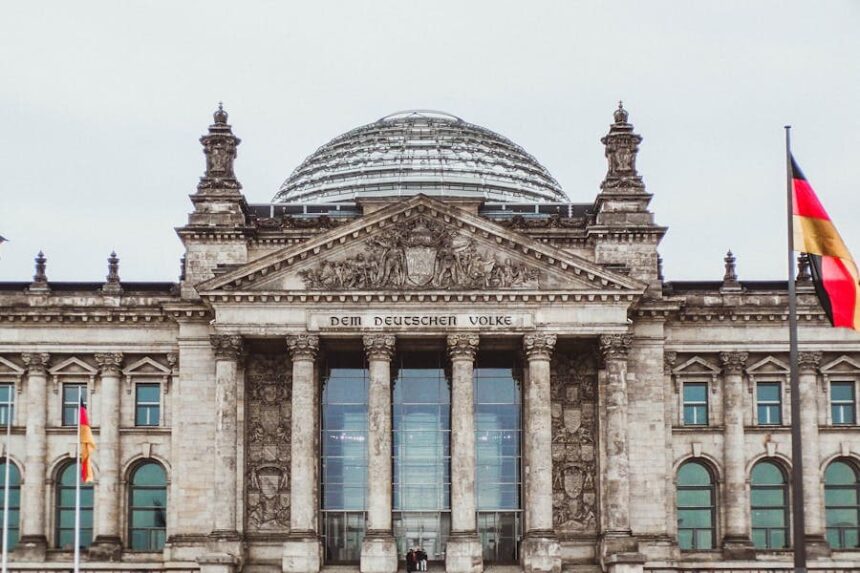The concept of limited government is a foundational pillar of American democracy. It reflects the idea that governmental power must be restricted through law to protect individual liberty. But where is limited government in the Constitution, and how exactly is this principle woven into the nation’s founding document?
When the Founding Fathers gathered to draft the Constitution, one of their primary concerns was avoiding tyranny, whether by a monarch or a centralized authority. As a result, the U.S. Constitution was crafted with multiple mechanisms to ensure that the government would not become too powerful. Through the separation of powers, checks and balances, federalism, and the Bill of Rights, the Constitution carefully outlines and restricts what government can and cannot do.
This article explores where and how the Constitution defines and enforces the idea of limited government. We’ll examine the clauses, amendments, and institutional structures that prevent the abuse of power while empowering citizens. Whether you are a student, educator, legal researcher, or simply a curious citizen, understanding how limited government is embedded in the U.S. Constitution is crucial to grasping the full intent of America’s constitutional framework.
Let’s dive in and explore: where is limited government in the Constitution and why it remains essential today.
Where is limited government in the Constitution?
Limited government is embedded in the U.S. Constitution through key principles like separation of powers, checks and balances, federalism, and the Bill of Rights. These provisions ensure that no single branch or level of government can dominate, keeping authority constrained and accountable to the people.
How the Constitution Was Designed to Prevent Government Overreach
The principle of limited government lies at the heart of the U.S. Constitution. Influenced heavily by Enlightenment thinkers like John Locke and Montesquieu, the framers designed a government where authority would be defined and constrained by law to safeguard individual liberty. The Founding Fathers had witnessed the dangers of unchecked power under monarchies and wanted to ensure that no single person or institution could dominate the political landscape.
This vision is evident from the Constitution’s opening words in the Preamble, where the phrase “to secure the Blessings of Liberty to ourselves and our Posterity” expresses a clear commitment to personal freedom and restrained governance. The Constitution was written not to grant unlimited power, but to place firm boundaries on it.
To achieve this, the framers divided power across three branches—legislative, executive, and judicial—and between the federal government and the states. They also limited federal jurisdiction by enumerating its powers in the Constitution. Perhaps most importantly, the Bill of Rights added direct limitations on government action, thereby protecting fundamental freedoms such as speech, religion, due process, and property rights.
Understanding where limited government is in the Constitution means recognizing that the document as a whole, from its structure to its amendments, was purposefully designed to prevent tyranny and preserve liberty through legal limits on authority.
How Does the Constitution Limit Government Power?
The U.S. Constitution was deliberately crafted to prevent the concentration of power and to ensure the government remains accountable to the people. Through several structural and legal mechanisms, it sets clear boundaries on what the government can and cannot do.
Separation of Powers in Articles I, II, and III
One of the most fundamental ways the Constitution limits government is by dividing power among three distinct branches: the legislative, executive, and judicial. Each branch is assigned its own set of responsibilities and authority in Articles I, II, and III. This separation ensures that no single branch can dominate the government or act unilaterally. For instance, while Congress makes laws, the President enforces them, and the courts interpret them.
Checks and Balances Between the Branches
Closely tied to the separation of powers is the system of checks and balances. This mechanism allows each branch to monitor and, when necessary, restrain the actions of the others. Presidential vetoes, congressional oversight hearings, and the judiciary’s ability to declare laws unconstitutional are all examples of these safeguards. These built-in limits prevent abuse of power and ensure collaboration and accountability across branches.
Federalism and the 10th Amendment
The Constitution also limits federal authority through the principle of federalism. By dividing powers between the national government and the states, the Constitution ensures a decentralized governance system. The 10th Amendment explicitly states that powers not delegated to the federal government are reserved to the states or the people, reinforcing this balance and preserving state autonomy.
The Bill of Rights as a Constitutional Shield
The first ten amendments, known as the Bill of Rights, serve as powerful constraints on federal power. These amendments prohibit the government from infringing on fundamental rights, including freedom of speech, religion, due process, and assembly. They exist to protect individuals from potential government overreach.
Enumerated Powers in Article I, Section 8
Article I, Section 8 of the Constitution lists the specific powers granted to Congress. By enumerating these powers, the framers made it clear that the government could not operate beyond its defined scope. This explicit limitation reinforces the overall framework of a government bound by the rule of law.
Why Is Limited Government Important in a Constitutional Republic?
In a constitutional republic like the United States, limited government is more than a principle—it’s a safeguard for democracy. By placing limitations on the government’s authority, the Constitution safeguards individual freedoms and ensures that power remains in the hands of the people. A limited government doesn’t just define boundaries for authority; it upholds accountability, legal integrity, and national stability. Here’s why it remains critically important:
- Protects Individual Rights: A limited government ensures that core freedoms, such as freedom of speech, freedom of religion, and the right to peaceful assembly, are protected. Without these constraints, governments could interfere with or suppress civil liberties.
- Prevents Tyranny and Centralized Power: Dividing authority among branches and levels of government ensures that no single person or group can dominate the political system, reducing the risk of authoritarian rule.
- Upholds the Rule of Law: Everyone—government officials and citizens alike—is subject to the same laws. This equality under the law forms the basis for justice and fairness in society.
- Promotes Government Accountability: Clearly defined limits make it easier for the public to monitor government actions and hold officials accountable when they overstep legal boundaries.
- Ensures Fair and Balanced Representation: Power sharing between federal and state governments enables local interests to be represented, giving citizens a stronger voice in their governance.
- Fosters Long-Term Stability: By preventing sudden or extreme shifts in authority, limited government contributes to a more predictable and secure political environment.
Where in the Constitution Is Limited Government Explicitly Evident?
The U.S. Constitution outlines limited government through a series of specific clauses and amendments that either restrict or define the scope of federal authority. These provisions ensure the federal government operates within clear boundaries and respects the autonomy of states and the rights of individuals. Here are five critical places where limited government is most explicitly demonstrated:
- The 10th Amendment’s Role in Power Limitation: The 10th Amendment reinforces the concept of limited government by stating that all powers not delegated to the federal government are reserved for the states or the people. This ensures that federal authority is not open-ended and that states maintain significant governing rights.
- The Necessary and Proper Clause’s Narrow Scope: Located in Article I, Section 8, this clause allows Congress to pass laws needed to carry out its enumerated powers—but not to create new powers out of thin air. Its scope is tied strictly to the powers already outlined in the Constitution.
- Article VI and the Supremacy Clause: Although this clause establishes the Constitution as the supreme law of the land, it only applies when the federal government is acting within its lawful constitutional limits. It does not grant unlimited authority.
- Article I, Section 9: Prohibited Powers: This section explicitly denies Congress certain powers, including the ability to grant titles of nobility or tax exports between states—clear examples of legal restrictions on government action.
- Judicial Interpretation and Constitutional Boundaries: The courts, particularly the Supreme Court, have played a significant role in reinforcing limited government by interpreting these provisions and striking down laws that exceed constitutional limits.
Can Limited Government Evolve?
While the Constitution outlines strict limits on government power, its interpretation has evolved. Historical, legal, and societal factors have influenced how those limits are applied in practice.
Judicial Decisions and Constitutional Interpretation
One of the most significant ways limited government has evolved is through the judiciary, particularly the Supreme Court. Over time, court rulings have either expanded or constrained federal authority, often reflecting the social, political, and economic conditions of the era. Landmark decisions have redefined the extent to which government power can be exercised, sometimes reinforcing constitutional limits and at other times stretching their interpretation.
Impact of Constitutional Amendments
Amendments to the Constitution have also reshaped the structure of limited government. For instance, the 14th Amendment significantly expanded federal involvement in civil rights protections, while the 17th Amendment altered the method of electing senators, shifting more power to the people. These changes respected the original framework of the Constitution while modifying its function to meet modern needs.
Government Expansion During Crises
Periods of national crisis—such as wars, economic depressions, or health emergencies—have often led to temporary expansions of federal authority. While these measures are usually rolled back after the crisis ends, they frequently spark ongoing debates about the scope and permanence of government power.
The Role of Public Opinion
Public perception and civic engagement strongly influence how limited government operates. When citizens are active, informed, and vocal, they serve as a check on power, demanding adherence to constitutional limits.
Growth of Federal Agencies
The emergence of federal administrative agencies has blurred traditional constitutional boundaries. Although agencies serve critical roles, their expanding regulatory powers have raised concerns about overreach and the erosion of foundational limits on government authority.
In Summery
The principle of limited government remains a cornerstone of the U.S. Constitution, embedded in its very design. From the separation of powers to the Bill of Rights, the Founders established a framework in which the government would always answer to the people, rather than the other way around. Today, these principles continue to safeguard civil liberties, inform lawmaking, and delineate the boundaries of state and federal authority. So, when inquiring about the presence of limited government in the Constitution, the answer lies in nearly every article, clause, and amendment, which were crafted to preserve freedom and resist centralized power.
FAQ’s
What part of the Constitution defines limited government?
Limited government is defined by the separation of powers, enumerated powers, and amendments, such as the 10th Amendment and those in the Bill of Rights.
Why did the Founders choose limited government?
They aimed to avoid tyranny and protect individual rights by ensuring the government could not act beyond the authority granted by the people.
How does the Bill of Rights limit government?
It prevents the government from infringing on core freedoms, such as speech, religion, press, and due process, regardless of changes in administrations.
Is limited government still effective today?
Yes, but it depends on civic awareness, legal interpretation, and a healthy balance of power among branches and between federal and state levels.
Can the Constitution’s limits be changed?
Only through amendments ratified by states or reinterpretation by the Supreme Court ensuring that changes reflect national consensus.




